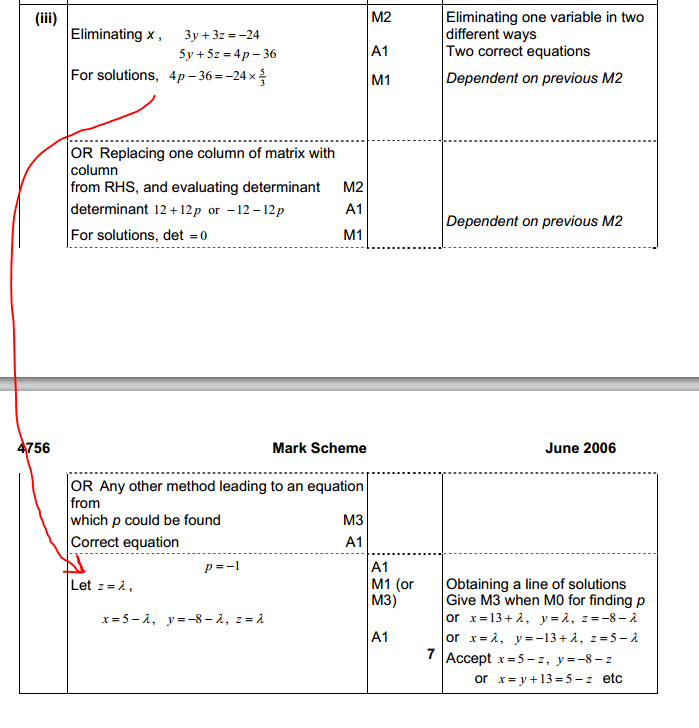Associate
- Joined
- 5 Apr 2008
- Posts
- 1,526
Hey Guys...
I'm a little stuck on this question and was wondering if you guys could give me a hand.
It is part iii) that I am not sure about. You can see that the simultaneous equation is based on the matrix in part i) but with k = 5 ...
This means that the determinant is 0... so I think i'm right in saying that there are either no solutions or infinitely many solutions.
Part iii has me stuck. I can see how it has been done (from the mark scheme) but am struggling to see why that works. How do you know if there are no solutions or infinitely many if you have 3 simultaneous equations where determinant is 0?

Mark Scheme:

I'm a little stuck on this question and was wondering if you guys could give me a hand.
It is part iii) that I am not sure about. You can see that the simultaneous equation is based on the matrix in part i) but with k = 5 ...
This means that the determinant is 0... so I think i'm right in saying that there are either no solutions or infinitely many solutions.
Part iii has me stuck. I can see how it has been done (from the mark scheme) but am struggling to see why that works. How do you know if there are no solutions or infinitely many if you have 3 simultaneous equations where determinant is 0?

Mark Scheme:



